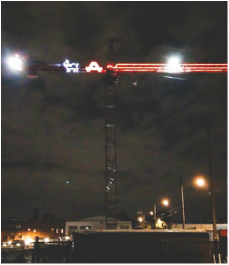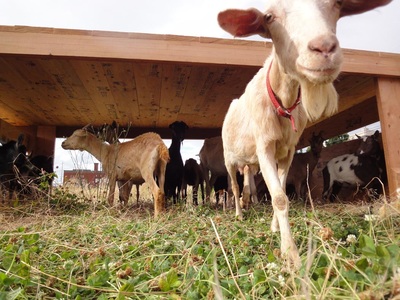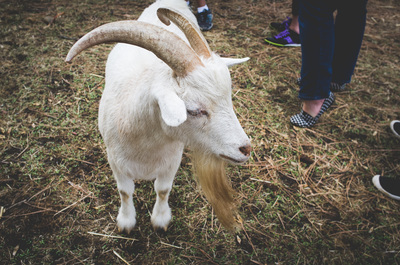A couple of years back, in 2010, a landscape architect interested in landscape management, urban agriculture and biophilia, pulled together an experiment of the caprine kind. He was studying vegetation successions on a 2-acre urban vacant lot in the Southeast of Portland when the idea came to use goats for trimming the grasses instead of using a gas-powered mower. He pitched the idea to the developers that own the land and managed to convince them to rend a head of goats by explaining how this practice could bring about environmental benefits (no air pollution and reduced weed dispersal, since most weed seeds are not viable after they have passed through the goat’s digestive system) as well as social benefits (since people would most likely be attracted to and entertained by the goats).
Theirs was the classic Portland coming-of-age story. They found a home in Southeast in 2012, grew their young family, established an identity, a community and friends. Then they moved toward the suburbs.
– Thomas Boyd, The Oregonian, October 5th, 2014
 Photo by Dillon Mahmoudi
Photo by Dillon Mahmoudi Now that you know the story of the Belmont Goats, doesn’t it sound strangely familiar? This space lied vacant, uninteresting, invaded by undesirable weeds, until an entertaining, creative solution is brought forth to keep those undesirables in check. All of the sudden the space is noticed by people who walk by. They develop a strong enough emotional attachment to it, they tell their friends about it. When the time comes to transform that space into something that is profitable, the collectively memory of this creativity might just make someone buy into the whole idea. In the words of commercial real estate market manager for the U.S. Bank in Portland about the development on the Goat Blocks: ‘The mixed-use style project and fun recent history of the site will create a vibrant urban space and attract shoppers and residents throughout the region.’ And without doubt, the developers knew how to take advantage of this ‘fun recent history’. The project is still in the construction phase, but we can already see the goat imagery lit up on the cranes at night.
LOCA (a.k.a. the Goat Blocks!) is a collection of mixed-use buildings being developed in the heart of Portland’s eclectic Central Eastside. Lying at the center of multi-modal human-flow, this three-city block site is designed to provide an authentic urban living room for residents, customers (and perhaps, a few goats).
– Description of the project from the developer’s website
In some ways, the Belmont Goats acted as catalysts, moving into an underdeveloped space, making it more desirable through their sheer presence right before being pushed away towards underused spaces further out from the center, leaving the space for other more profitable activities. The problem with agriculture is that we simultaneously need it to be close to us, but we also want it to be on land that can’t be used for development. As the urban growth boundary’s effects lead to the densification of Portland’s neighborhoods, theses privileged spaces where residents can make regular contact with nature, whether it’s urban fauna or flora, are becoming increasingly scarce. The planning choices that are made now will affect how people interact with nature and their food system for years to come. That’s quite a large responsibility to take on, especially when knowledge of food system planning and advocacy for food justice are tools rarely mastered by urban planners.
To conclude on a lighter note, the good news is the city of Portland allows its residents to keep on their property fowl, horses, mules, burros, asses, cattle, sheep, goats, llamas, emu, ostriches, rabbits and swine, provided they are properly housed and taken care of. I’m not surprised I found people in Portland to be so relaxed and easy going – maybe Montrealers would be too if they could spend a few minutes a day petting some goats or collecting some fresh chicken eggs. Just some food for thought – maybe it’s time to bring back ‘Ma poule à Montréal’!
Claudia







 RSS Feed
RSS Feed
